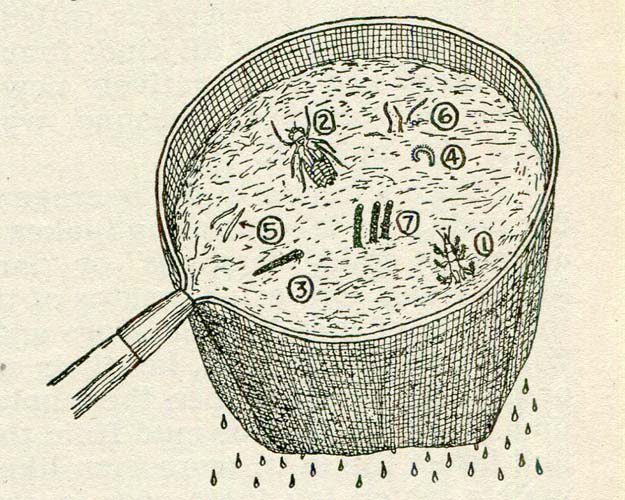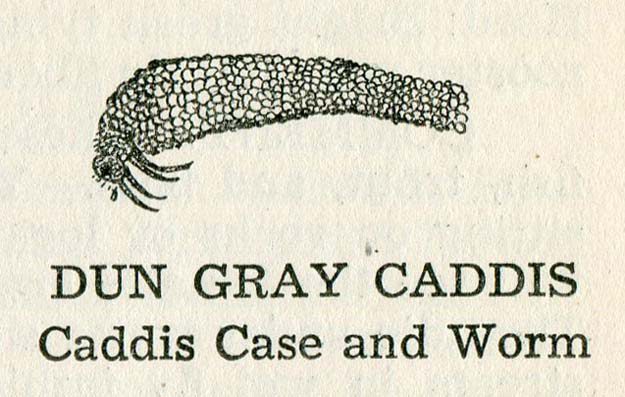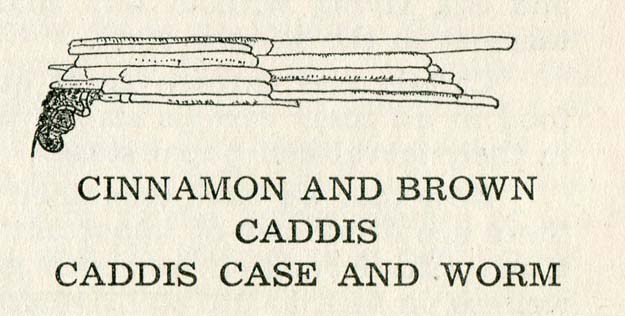George Leonard Herter, Professional Fly Tying and Tackle Making, Manual and Manufacturer’s Guide, Waseca (Minnesota), The Brown Publishing Company, (1941) 1949, p. 179.
The case is held together by a sticky, silk substances which the larvae excrete from their salivary glands. The Inside of the case is round and smooth. The cases are open at both ends to allow a circulation of water. The rear end usually has only a very small hole in it.

The larvae builds onto the front end of the case, making it wider and longer as it grows. Some larvae just discard their case and build a complete new one when it threatens to become too small. The larva has two strong tough hooks on the rear of its body and thses hooks are used to hold onto its case. Often, when you try to pull a caddis larva from its case, you pull it apart because of the grasp these hooks have on the case. The head, thorax and front feet of the caddis larvae protrude from the case so that it can feed and also move around while still within the case, if desired. Some caddis larvae drag their cases around with them or swim with them; often fasten them to rocks, limbs or vegetation.The case is built by the caddis worms for protection and camouflage. As far as protection goes, they afford little. Trout, bass, and panfish at times, swallow the larva, case and all.

